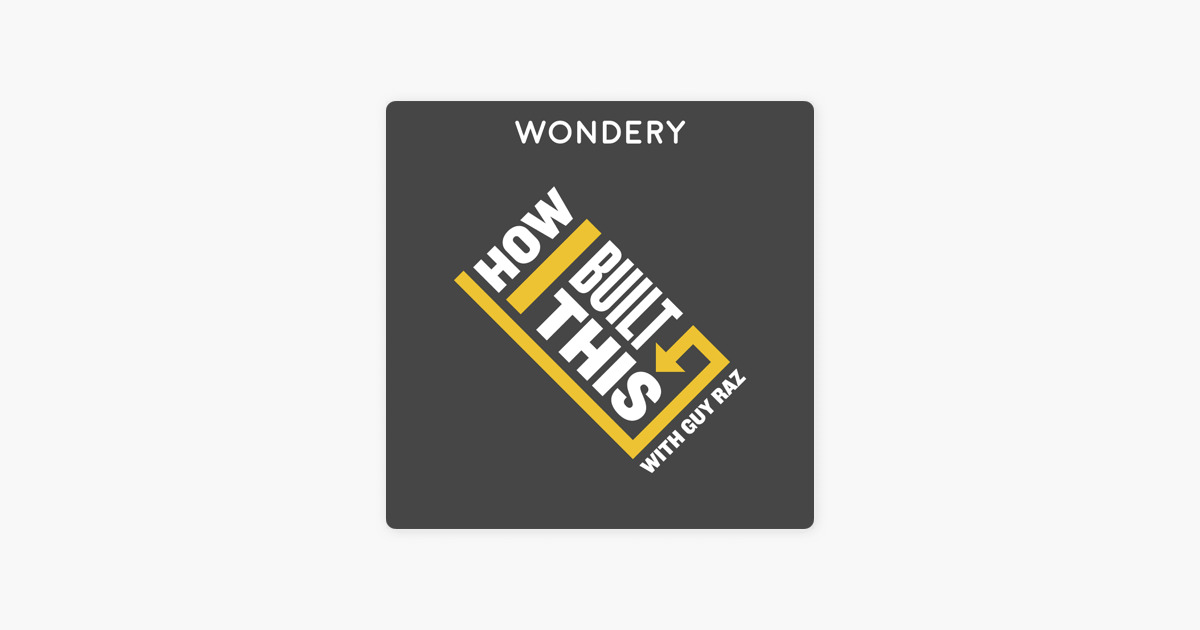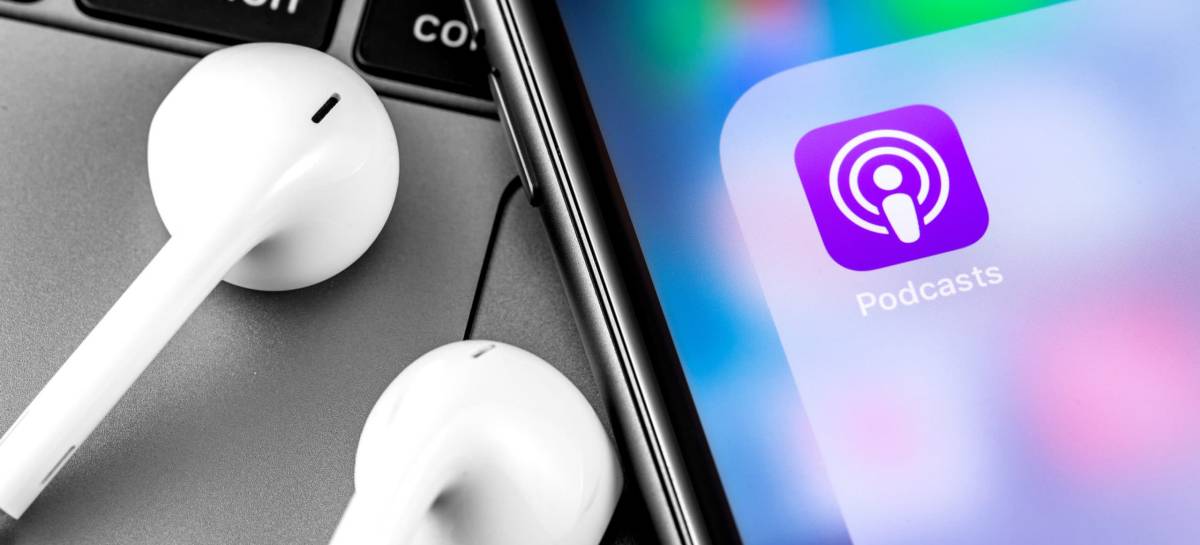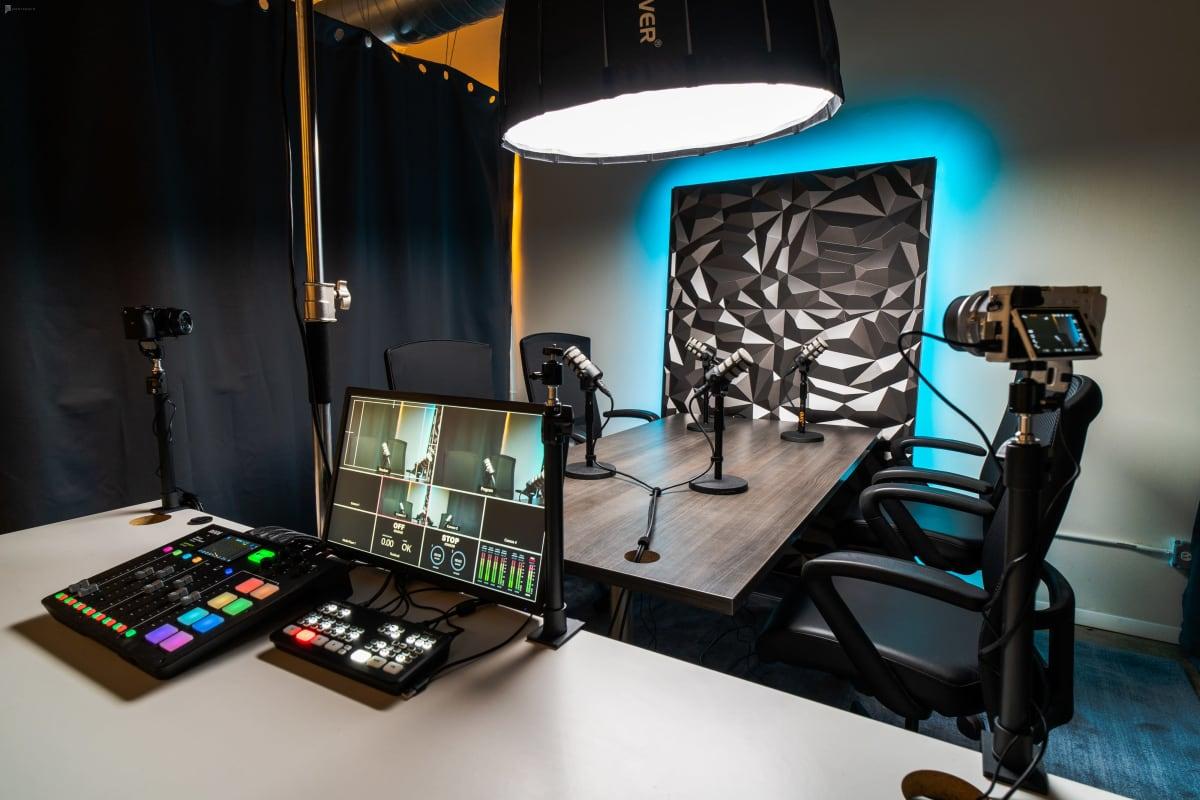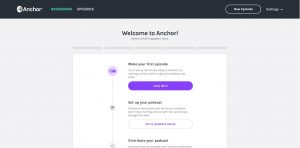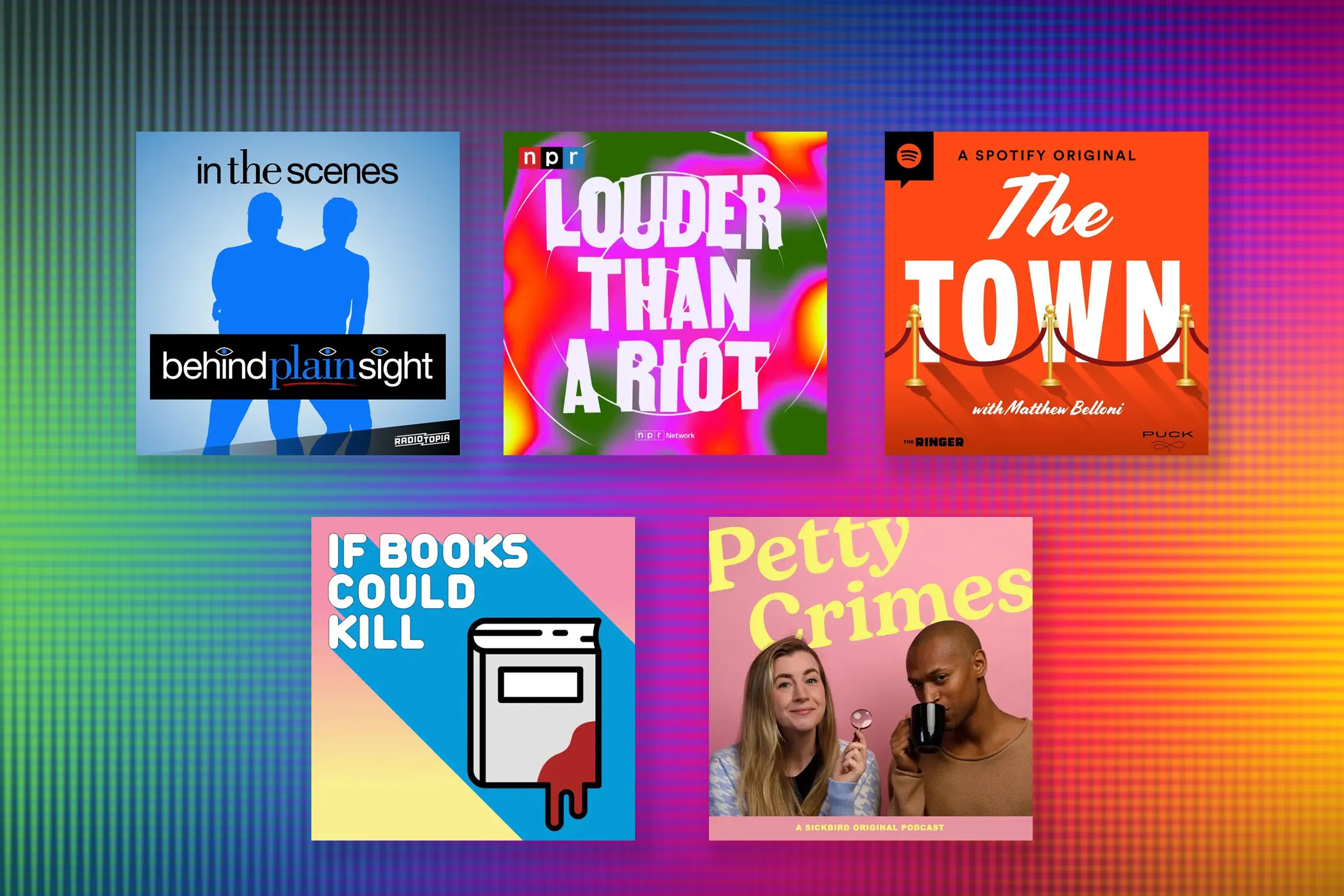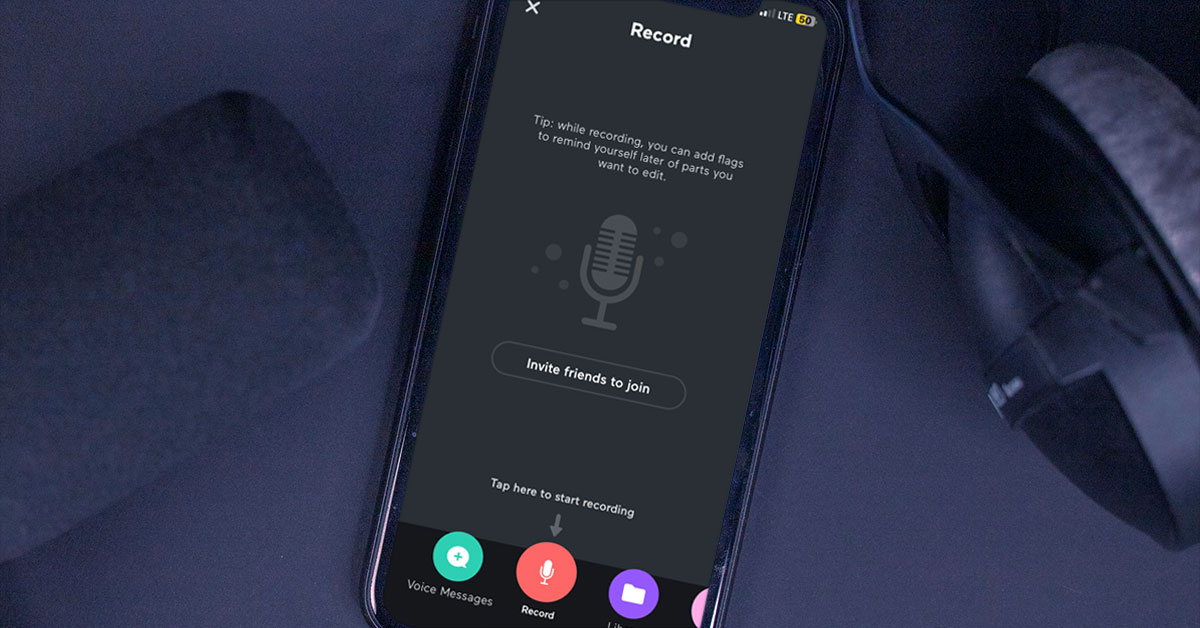Introduction
Are you fascinated by the stories behind some of the most successful companies in the world? Do you ever wonder how these business empires were built from scratch? If so, you’re in luck because the “How I Built This” podcast is here to satisfy your curiosity.
In this captivating podcast series, host Guy Raz sits down with the founders of various renowned companies to delve into the intriguing and often tumultuous journeys that led to their success. Through in-depth interviews and insightful conversations, Raz uncovers the secrets, challenges, and triumphs behind these remarkable entrepreneurial achievements.
Each episode of “How I Built This” offers a unique window into the extraordinary vision, determination, and resilience exhibited by the founders. From sharing their initial breakthrough moments to navigating the hurdles of scaling and expansion, these entrepreneurs paint a vivid picture of the rollercoaster ride that is building a business from the ground up.
Throughout the podcast, you’ll discover the stories of iconic companies like Airbnb, Instagram, Patagonia, Spanx, Warby Parker, Lyft, Whole Foods Market, Slack, Zumba, and Vice Media. Each episode provides a behind-the-scenes look at how these companies disrupted industries, challenged established norms, and carved out their place in the business world.
Prepare to be inspired as you learn about the early struggles, innovative solutions, and pivotal decisions that shaped these companies into what they are today. “How I Built This” showcases the power of entrepreneurship and serves as a reminder that anyone with a dream, determination, and a willingness to take risks can achieve great things.
So, whether you’re an aspiring entrepreneur or simply a curious listener, join us as we dive into the captivating stories behind some of the world’s most successful companies in the “How I Built This” podcast.
Episode 1: The story of Airbnb
Episode 1 of “How I Built This” takes us deep into the revolutionary story of Airbnb, a company that transformed the way people travel and disrupted the traditional hospitality industry.
It all started in 2007 when two roommates, Brian Chesky and Joe Gebbia, were struggling to make ends meet in San Francisco. With a major design conference coming to town and hotel rooms in short supply, they saw an opportunity to offer air mattresses in their living room as a temporary lodging solution. They created a simple website, Airbedandbreakfast.com, to attract guests and help pay their rent.
Little did they know that this humble idea would be the beginning of a global phenomenon.
During the interview, Chesky and Gebbia recount the challenges they faced in the early days of Airbnb. With limited resources and the need to scale their business, they decided to participate in a design conference in New York City. They managed to secure a slot to pitch their idea, and through sheer determination and a stroke of luck, they secured their first funding and mentorship that propelled them forward.
As the business expanded, Chesky and Gebbia faced numerous obstacles, including legal battles, convincing people to trust strangers and open their homes to travelers, and overcoming the fear of failure. They discuss the importance of building a strong community, the power of the Airbnb brand, and the impact of storytelling in connecting with users on a personal level.
The episode also highlights Airbnb’s pivotal moments, such as the rebranding from Airbedandbreakfast.com to Airbnb, launching Airbnb Experiences to diversify their offerings, and their response to the COVID-19 pandemic.
Through their perseverance and innovative thinking, Chesky and Gebbia took a simple idea and transformed it into a billion-dollar company that revolutionized the hospitality industry and forever changed the way we travel and experience the world.
Episode 1 of “How I Built This” provides a fascinating glimpse into the ups and downs of building Airbnb, emphasizing the importance of seizing opportunities, embracing challenges, and staying true to your vision even in the face of adversity.
Episode 2: The story of Instagram
In episode 2 of “How I Built This,” host Guy Raz dives into the captivating story of how a simple photo-sharing app transformed into a global social media giant: Instagram.
The episode features the founders of Instagram, Kevin Systrom and Mike Krieger, who share their incredible journey from the app’s humble beginnings to its eventual acquisition by Facebook for a staggering $1 billion.
Systrom and Krieger recount how their paths crossed at Stanford University and how they bonded over their shared passion for photography and technology. With Systrom’s programming skills and Krieger’s design expertise, they saw an opportunity to create a platform that would enable people to capture and share their life through beautiful images.
They faced numerous challenges along the way, including figuring out how to differentiate themselves in a crowded market and gaining traction in an era dominated by social media giants such as Facebook and Twitter.
The turning point came when they made a pivotal decision to focus solely on mobile. They realized the potential of smartphones as a platform for both capturing and sharing photos, and they pivoted their product to cater to this emerging trend.
The founders discuss the pivotal role of collaboration and user feedback in shaping Instagram’s iconic features, such as filters, the square photo format, and the emphasis on simplicity and ease of use. They also touch on the importance of timing in the app’s success and how they leveraged the power of networks and influencers to gain early adopters.
The episode explores Instagram’s rapid growth, from its launch in 2010 to reaching 1 million users within just a few months. Systrom and Krieger talk about the challenges of scaling the app’s infrastructure to handle the exponential surge in user numbers and the pressure that came with that growth.
Eventually, Instagram caught the attention of Facebook CEO Mark Zuckerberg, who offered to acquire the company. Systrom and Krieger weigh the pros and cons of the acquisition and the impact it had on Instagram’s future trajectory.
The story of Instagram is a testament to the power of creativity, innovation, and recognizing unique opportunities. From a small team working in a co-working space to becoming one of the most popular social media platforms in the world, Systrom and Krieger’s journey is inspiring for entrepreneurs and aspiring app developers alike.
Episode 3: The story of Patagonia
In episode 3 of “How I Built This,” host Guy Raz delves into the fascinating story of Patagonia, the iconic outdoor clothing and gear company known for its commitment to environmental activism and sustainable business practices.
The episode features Yvon Chouinard, the founder of Patagonia, who shares his remarkable journey from being a passionate rock climber to building a successful and socially responsible business empire.
Chouinard recounts the early days of Patagonia when he started as a blacksmith making climbing gear. Frustrated by the poor quality of equipment available at the time, he began crafting his own gear and soon found a demand for his products among fellow climbers.
As the company grew, Chouinard faced the ethical dilemma of balancing profitability with his personal values and commitment to sustainability. He talks about the challenges of sourcing environmentally friendly materials, adopting fair labor practices, and taking a stance against wasteful consumerism.
Patagonia’s deep-rooted commitment to environmental activism is a prominent theme in the episode. Chouinard shares stories of the company’s efforts to protect public lands, mitigate climate change, and inspire consumers to make conscious choices through initiatives like their “Don’t Buy This Jacket” campaign.
The episode also delves into Patagonia’s unique approach to business, including their employee-centric culture, decision-making process based on shared values, and the formation of 1% for the Planet, an alliance of companies committed to donating a portion of their profits to environmental causes.
Throughout the interview, Chouinard emphasizes the importance of staying true to your values, even when faced with difficult decisions. He emphasizes the significance of building a brand with a purpose and fostering a community of like-minded individuals who share a passion for the outdoors and the environment.
The story of Patagonia is a testament to the power of combining business success with environmental stewardship. Chouinard’s vision and unwavering dedication to creating a company that prioritizes the planet as much as profits set a new standard for sustainable business practices.
Episode 3 of “How I Built This” provides a captivating look into the incredible journey of Patagonia, inspiring listeners to embrace sustainability and consider the impact of their business ventures on the world around them.
Episode 4: The story of Spanx
In episode 4 of “How I Built This,” host Guy Raz explores the inspiring story behind Spanx, the revolutionary shapewear company that redefined the fashion industry and empowered women around the world.
The episode features Sara Blakely, the founder of Spanx, who shares her remarkable journey from selling fax machines door-to-door to becoming a self-made billionaire and one of the most influential women in the business world.
Blakely recounts the lightbulb moment that led to the creation of Spanx. Frustrated by the lack of options for smooth and comfortable undergarments, she cut the feet off her pantyhose and realized she had discovered a solution that could revolutionize the industry.
Despite having no background in fashion or business, Blakely took a leap of faith and invested her own savings to launch Spanx. She faced numerous challenges along the way, from securing manufacturing and distribution to convincing retailers to carry her innovative product.
Through determination and perseverance, Blakely built Spanx into a global brand. She discusses the power of word-of-mouth marketing and how her products quickly gained a passionate following through women sharing their positive experiences.
Blakely’s approach to entrepreneurship is marked by resilience and tenacity. She emphasizes the importance of embracing failure and maintaining a positive mindset, even in the face of setbacks or skepticism from others.
The episode also explores Blakely’s commitment to female empowerment. She shares her journey of becoming the first self-made female billionaire and the importance of using her success to uplift and support other women in entrepreneurship.
Blakely’s philanthropic efforts, such as her Spanx Leg Up program, which provides mentorship and support to female entrepreneurs, showcase her dedication to paying it forward and creating opportunities for others.
The story of Spanx is a testament to the power of a simple idea, unwavering resilience, and understanding the needs of your target market. Blakely’s journey serves as an inspiration for aspiring entrepreneurs, particularly women, highlighting that with perseverance and a bold vision, anything is possible.
Episode 4 of “How I Built This” provides a fascinating look into the incredible entrepreneurial journey of Sara Blakely and the undeniable impact of Spanx on both the fashion industry and female empowerment.
Episode 5: The story of Warby Parker
In episode 5 of “How I Built This,” host Guy Raz explores the inspiring story behind Warby Parker, the transformative eyewear company that disrupted the traditional glasses industry with its direct-to-consumer model and socially conscious mission.
The episode features Neil Blumenthal and Dave Gilboa, two of the co-founders of Warby Parker, who share their journey from identifying a problem in the eyewear market to building a successful and socially conscious business.
Blumenthal and Gilboa recount the idea that sparked the creation of Warby Parker, which stemmed from their frustration with the high cost of prescription eyewear and the lack of stylish options available. They recognized an opportunity to offer affordable, fashionable glasses by selling directly to consumers online.
Throughout the episode, the founders share the challenges they faced, from navigating the complex industry regulations to finding reliable suppliers and building a strong brand foundation.
One of the key aspects that sets Warby Parker apart is their commitment to social impact. Blumenthal and Gilboa developed the Buy a Pair, Give a Pair program, which ensures that for every pair of glasses sold, a pair is donated to someone in need. They discuss the importance of corporate responsibility and their belief that businesses should have a positive impact on society.
The episode also explores Warby Parker’s innovative approach to customer service and marketing. The company set up a Home Try-On program, allowing customers to try multiple frames at home before making a purchase, which revolutionized the traditional shopping experience. Additionally, they embraced a strong online presence and leveraged social media to foster a community of loyal customers.
The founders also discuss their dedication to creating a diverse and inclusive work environment. They highlight the importance of building a strong team culture and the role it plays in the company’s success.
The story of Warby Parker exemplifies the power of disruption and innovation. Blumenthal and Gilboa’s vision to challenge the status quo in the eyewear industry paved the way for a more accessible and socially responsible approach to buying glasses.
Episode 5 of “How I Built This” provides an insightful behind-the-scenes look into the inspiring journey of Warby Parker, showcasing the significance of identifying a market need, embracing a social mission, and taking bold steps to transform an industry.
Episode 6: The story of Lyft
In episode 6 of “How I Built This,” host Guy Raz takes us on a journey into the remarkable story of Lyft, the ridesharing company that disrupted the transportation industry and changed the way people commute.
The episode features Logan Green and John Zimmer, co-founders of Lyft, who share their experiences and insights on how they turned a simple idea into a billion-dollar company.
The origins of Lyft can be traced back to Green’s childhood experiences in Zimbabwe, where he witnessed the inefficiencies of public transportation. Inspired by the concept of carpooling, he saw an opportunity to reimagine and optimize the way people travel.
Green and Zimmer discuss the challenges they faced in the early days, from regulatory obstacles to gaining the trust of both drivers and passengers. They emphasize the importance of building a culture of community and focusing on the safety and well-being of everyone involved in the Lyft ecosystem.
Another key aspect of the Lyft story is the company’s commitment to sustainability. The founders share their belief in the potential of ridesharing to reduce congestion and carbon emissions, and how they strive to create a positive impact on the environment.
The episode also explores the role of technology in Lyft’s success. Green and Zimmer discuss the development of the ridesharing app, the challenges of scaling the platform to meet increasing demand, and the importance of constant innovation to stay ahead in a rapidly evolving industry.
Furthermore, the founders touch on the power of collaboration and partnerships in Lyft’s growth. They discuss their strategic alliances with organizations and cities, as well as their focus on driver satisfaction and empowerment.
Lyft’s journey is a testament to the power of disruption and the ability to leverage technology for positive change. Green and Zimmer’s vision transformed the way people commute and opened up new economic opportunities for drivers.
Episode 6 of “How I Built This” provides a fascinating insight into the entrepreneurial spirit behind Lyft, showcasing the significance of identifying a market need, embracing innovation, and pioneering a new era of transportation.
Episode 7: The story of Whole Foods Market
Episode 7 of “How I Built This” takes us into the captivating story of Whole Foods Market, the iconic supermarket chain that revolutionized the way we think about organic and natural foods.
The episode features John Mackey, the co-founder and former CEO of Whole Foods, who shares the incredible journey of building a small grocery store into a global retail giant.
Mackey recounts the early days of Whole Foods Market when the natural and organic food movement was in its infancy. He discusses the challenges of sourcing high-quality, sustainable products, educating consumers about healthy eating, and overcoming the perception that organic food was only for hippies.
Throughout the episode, Mackey emphasizes the importance of creating a strong company culture rooted in the values of quality, customer service, and environmental stewardship. He discusses the significance of maintaining relationships with farmers and suppliers and forging a deep connection with local communities.
Mackey also delves into the transformative acquisition of several regional natural food stores, which helped Whole Foods expand its reach and establish a national presence. He shares his experiences of navigating the ups and downs of growth, including managing finances, prioritizing employee well-being, and dealing with intense competition.
One of Whole Foods Market’s core principles is its commitment to corporate responsibility and sustainability. Mackey discusses the company’s efforts to reduce waste, promote eco-friendly practices, and support local and global charitable initiatives.
Furthermore, the episode explores the challenges faced by Whole Foods in maintaining its core values after its acquisition by Amazon in 2017. Mackey shares his perspective on the evolution of the company and the potential benefits and drawbacks of the merger.
The story of Whole Foods Market is an inspiration for entrepreneurs and health-conscious individuals alike. Mackey’s vision and unwavering commitment to quality, sustainability, and community have shaped an enduring legacy in the grocery industry.
Episode 7 of “How I Built This” offers a fascinating glimpse into the entrepreneurial journey of Whole Foods Market, showcasing the importance of staying true to your values, fostering relationships, and creating a brand that resonates with customers’ desire for healthy, ethical, and sustainable options.
Episode 8: The story of Slack
In episode 8 of “How I Built This,” host Guy Raz explores the captivating story behind Slack, the popular team collaboration platform that has transformed the way people communicate and work together.
The episode features Stewart Butterfield, one of the co-founders of Slack, who shares the remarkable journey of building a successful product in a highly competitive market.
Butterfield first gained recognition as a co-founder of the photo-sharing service Flickr. However, it was through the challenges of developing an online game called Glitch that the idea for Slack was born. The team at Tiny Speck, the organization behind Glitch, realized that the communication tool they had developed to collaborate internally was far more valuable than the game itself.
Butterfield recounts the early days of Slack, from the initial struggles to gain traction to the pivotal moment when the product began to resonate with users. He discusses the importance of creating a seamless user experience and focusing on simplicity, which ultimately differentiated Slack from other communication platforms.
The episode also explores the challenges of scaling a rapidly growing product and navigating the competitive landscape of technology companies. Butterfield shares the importance of cultivating a strong company culture, fostering a sense of teamwork, and hiring talented individuals who aligned with Slack’s values and mission.
Central to the story of Slack is the concept of “eating your own dog food.” Butterfield explains how the team at Slack relied on their own product to collaborate and communicate internally, continually refining its features based on their own experiences and needs.
Butterfield also reflects on the impact of Slack beyond the workplace. He discusses the unexpected ways in which the platform has been utilized across communities and organizations, fostering connections and enabling productivity in various fields.
The story of Slack showcases the power of recognizing and capitalizing on a need in the market, as well as the value of constant innovation and adaptation. Butterfield’s entrepreneurial journey serves as an inspiration for aspiring founders, highlighting the significance of perseverance, user-centric design, and building a strong company culture.
Episode 8 of “How I Built This” provides an insightful look into the creation of Slack, demonstrating how an idea born out of a seemingly unrelated venture can evolve into a transformative and widely adopted product.
Episode 9: The story of Zumba
In episode 9 of “How I Built This,” host Guy Raz takes us on a rhythmic journey into the inspiring story of Zumba, the global fitness phenomenon that has revolutionized the way people experience exercise.
The episode features Alberto Perlman and Alberto Aghion, two of the co-founders of Zumba, who share their remarkable journey from a chance encounter to building an internationally recognized dance fitness brand.
Perlman recounts how the idea for Zumba emerged during a fateful encounter with Beto Perez, a fitness instructor and choreographer. They recognized the power of combining fitness with irresistible Latin music and dance moves, creating a workout that felt more like a party than traditional exercise.
The episode delves into the challenges faced by Perlman and Aghion in their early days of building the Zumba brand. From securing partnerships with gyms and fitness centers to convincing people of the merits of their unconventional workout, they navigated the fitness industry with determination and innovative thinking.
Through word-of-mouth and enthusiastic testimonials from participants, Zumba’s popularity skyrocketed. Perlman and Aghion discuss the importance of building a strong community and fostering a sense of inclusivity and joy in their classes. They emphasize the power of Zumba in bringing people of different backgrounds together through the universal language of music and dance.
The episode also explores the global expansion of Zumba and the impact it has had on individuals’ lives. Perlman and Aghion share stories of people who found solace, empowerment, and improved physical and mental health through their participation in Zumba classes.
Additionally, the founders discuss Zumba’s commitment to social impact through initiatives such as Zumba Fitness-Concerts, which raise funds for charitable causes. They highlight the importance of giving back to communities and the positive ripple effect that Zumba instructors have in their localities.
The story of Zumba is a testament to the power of dance, music, and community in transforming the way we approach fitness. Perlman and Aghion’s entrepreneurial journey showcases the potential of combining passion with an innovative approach to create a movement that transcends borders and inspires people worldwide.
Episode 9 of “How I Built This” provides an invigorating look into the origins of Zumba, capturing the spirit of joy and unity that the brand has fostered through its unique fusion of fitness and dance.
Episode 10: The story of Vice Media
Episode 10 of “How I Built This” unravels the captivating story behind Vice Media, the unconventional media company that disrupted the industry with its provocative, edgy, and immersive storytelling approach.
The episode features Shane Smith, one of the co-founders of Vice Media, who shares the incredible journey of building a multimedia empire from its humble beginnings as a punk magazine in Montreal.
Smith recounts the early days of Vice, where he and his co-founders embraced the DIY ethos and took risks to create content that spoke to a marginalized audience. They focused on covering stories and topics rarely covered by mainstream media, giving a voice to underground subcultures and exploring unheard perspectives.
The episode delves into the challenges faced by Vice in its early years, from financial struggles to legal issues. Smith discusses the importance of adaptation and expansion into different forms of media, including video production and online platforms, as the company evolved with the digital age.
Vice Media’s distinct brand identity and fearless approach to storytelling resonated with a global audience, particularly the millennial generation. Smith discusses the power of authenticity and connecting with audiences on a visceral level, and how Vice captured the attention of major media conglomerates as a result of their unique perspective.
Throughout the episode, Smith highlights the significance of taking risks and staying true to the company’s mission to provide unfiltered, uncensored, and unapologetic storytelling. He acknowledges the controversies surrounding Vice but also emphasizes the positive social impact achieved through their reporting, such as bringing attention to international conflicts and shedding light on pressing social issues.
The episode also explores Vice Media’s transition from a rebellious outsider to a corporate entity. Smith discusses the balance between preserving Vice’s distinctive voice while navigating the demands of advertisers and shareholders.
The story of Vice Media is a testament to the power of innovative storytelling and pushing boundaries in the media landscape. Smith’s entrepreneurial journey showcases the potential of embracing authenticity and challenging the status quo to create a media brand that engages and resonates with audiences.
Episode 10 of “How I Built This” provides an intriguing look into the origins and growth of Vice Media, capturing the essence of its revolutionary approach towards journalism and its influence on media culture worldwide.
Conclusion
The “How I Built This” podcast is a treasure trove of captivating stories that highlight the ingenuity, resilience, and entrepreneurial spirit behind some of the most successful companies and brands in the world. From disruptive startups to industry giants, each episode offers a fascinating glimpse into the journeys of founders who took bold risks, overcame obstacles, and built thriving businesses.
Through these diverse stories, we learn that entrepreneurship is not just about having a great idea or finding a gap in the market. It’s about perseverance, adaptability, and a deep understanding of the needs and desires of consumers. It’s about taking calculated risks, embracing failure as a steppingstone to success, and surrounding oneself with the right team and mentors.
The “How I Built This” podcast celebrates the human element of business, showcasing the passion, dedication, and unwavering belief in a vision that drives entrepreneurs forward. It reminds us that behind every successful company, there’s a story of hard work, sacrifice, and the ability to overcome adversity.
These stories also underscore the importance of innovation and the power of disruption. They showcase how entrepreneurs have challenged the status quo, brought fresh perspectives to established industries, and created entirely new markets. From revolutionizing transportation to transforming the way we shop and consume media, the impact of these visionary individuals extends far beyond their own businesses.
Moreover, the podcast highlights the significance of purpose-driven entrepreneurship. Many of the featured companies prioritize social responsibility, sustainability, and making a positive impact on communities and the environment. They prove that profitability and societal benefit can go hand in hand, inspiring a new generation of entrepreneurs to build businesses that create value beyond just financial success.
As we listen to the stories shared on “How I Built This,” we gain valuable insights, lessons, and inspiration. Whether we’re aspiring entrepreneurs, business enthusiasts, or simply curious listeners, these stories remind us of the boundless possibilities that lie within the realm of entrepreneurship.
So, join us as we continue to explore the incredible journeys and remarkable accomplishments of the individuals who dared to dream big, took risks, and built the companies we know and love today. “How I Built This” celebrates the human spirit of entrepreneurship and invites us to embark on our own journey to create, innovate, and make a difference in our own spheres.







